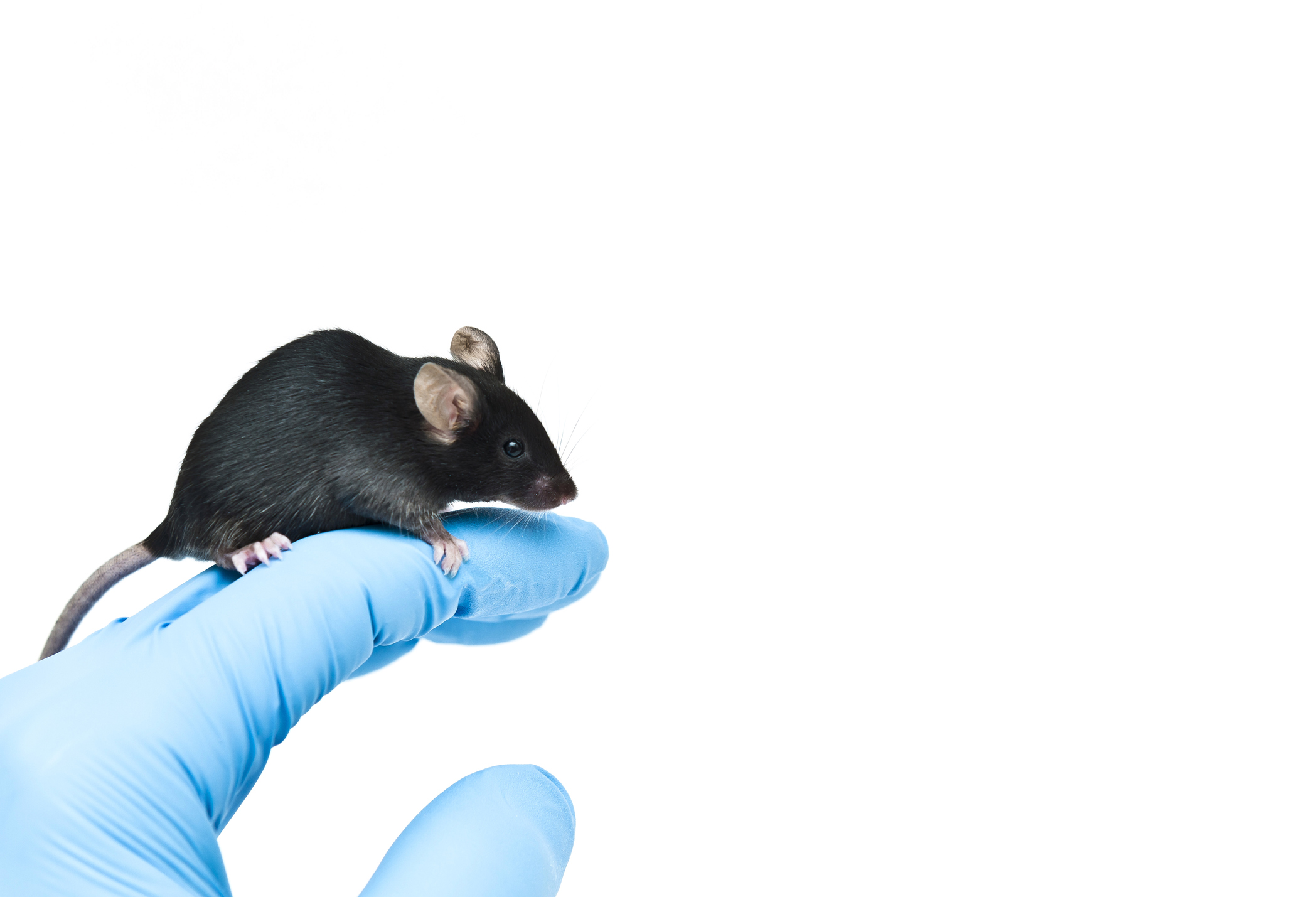Spotlight on CDER Science: A Novel Mouse Model Offers Insights About Hypersensitivity to an HIV Drug
A novel mouse model carrying a certain human gene variant is now able to show us how certain cells of the immune system play key roles in helping some patients tolerate the HIV drug abacavir while other similar patients experience hypersensitivity to it. Scientists used the new mouse model to investigate a well-known clinical challenge in HIV treatment. Some HIV patients carry a certain allele, or gene variant, known as HLA-B*57:01. These patients are genetically predisposed to a hypersensitivity reaction, and they can experience skin rash, fever, malaise, and gastrointestinal disorders. In 2008, an FDA Alert recommended that clinicians screen HIV patients for HLA-B*57:01 and avoid prescribing abacavir to those who carry the culprit allele.
However, while all patients that experience abacavir hypersensitivity screen positive for HLA-B*57:01, 45% of the patients that carry this allele do not experience an adverse reaction to the drug. This suggests that other factors also influence a patient’s response.
In a new study1 conducted in part by FDA scientists, this new mouse model showed how the immune system can protect against this hypersensitivity. Specifically, CD4+ T cells can suppress CD8+T cells (sometimes called “killer” cells), thereby averting a hypersensitivity reaction to abacavir. This study helps us understand why some patients who carry the HLA allele can tolerate abacavir.
Understanding the new mouse model
In the new study, the collaborating scientists generated mice with a unique genetic profile that allow them to serve as carriers of the human HLA-B*57:01 allele. Studies in lab tests (in vitro) showed that abacavir rapidly triggered the CD8+ T cells of mice who carried the HLA allele, which theoretically should induce a hypersensitivity reaction in the mice. However, none of the transgenic mice developed a hypersensitivity reaction when exposed to abacavir for up to four weeks. Further, scientists observed that among the transgenic mice with an intact immune system containing CD4+ T cells, abacavir partially stimulated the immune reaction of CD8+ T cells without triggering hypersensitivity. In contrast, when scientists depleted CD4+ T cells in these same mice before abacavir treatment, the mice experienced hypersensitivity.
Key lessons learned about immune system factors and abacavir hypersensitivity
Using the mouse model, the researchers learned that the depletion of CD4+ T cells predisposed these mice to abacavir reactivity by promoting the development of CD8+ T cells that are reactive to abacavir. They also learned that the depletion of CD4+ T cells allowed the maturation of dendritic (messenger) cells by upregulating, or increasing the response of, costimulatory molecules, which are necessary to optimally activate abacavir-reactive CD8+ T cells to become killer cells. Costimulation is a communication process in the immune system in which T cells become activated and are signaled to replicate. This explains why these mice with depleted CD4+ T cells showed greater abacavir hypersensitivity driven by activated CD8+ T cells. Conversely, researchers learned that blocking the costimulation of key dendritic cells inhibited the activation of abacavir-reactive CD8+ T cells, thereby averting a hypersensitivity reaction.
Finally, there was the question of how abacavir-reactive CD8+ T cells were fully activated in vitro but not in mice. The researchers found that in vitro dendritic cells spontaneously matured, regardless of the presence of CD4+ T cells or the drug, as a consequence of the cell culture. They discovered this difference by comparing dendritic cell maturation levels in cell cultures and in lymph nodes of abacavir-exposed mice. This phenomenon is not well understood, and current studies are underway to better understand the regulation of dendritic cell maturation both in vitro and in vivo. This finding points to a limitation of using only in vitro tests to understand immunological adverse drug reactions.
Implications for patient care and future research
This new mouse model is an important tool for investigating hypersensitivity reactions among carriers of a specific HLA allele. The model helps illuminate the relationship between drug hypersensitivity and the role of immune system cells, maturation, and costimulation in regulating unwanted immune responses.
Researchers could also use the model to investigate other important questions2 related to adverse drug reactions: What are the immune system mechanisms that influence how long it takes before the onset of adverse drug reactions? How is the immune system’s lifelong memory of adverse reactions sustained even after a drug is discontinued? And why do different drugs produce different drug reaction syndromes?
The mouse model could also be helpful in studying other drug hypersensitivities associated with HLA alleles. For example, the same HLA-B*57:01 allele has also been associated with adverse reactions for other drugs, including the antibiotic flucloxacillin and the antitumor drug pazopanib. For these drugs and others, the mouse model could improve our clinical understanding of hypersensitivity and drug tolerance, and help the agency make more informed decisions based on a better understanding of individual risk.
The Spotlight series presents generalized perspectives on ongoing research- and science-based activities within CDER. Spotlight articles should not be construed to represent FDA’s views or policies.
1Cardone M, et al. A transgenic mouse model for HLA-B*57:01–linked abacavir drug tolerance and reactivity. J Clin Invest. 2018;128(7):2819–2832.
2Phillips EJ, Mallal SA. Active suppression rather than ignorance: tolerance to abacavir-induced HLA-B*57:01 peptide repertoire alteration. J Clin Invest. 2018;128(7):2746–2749.

